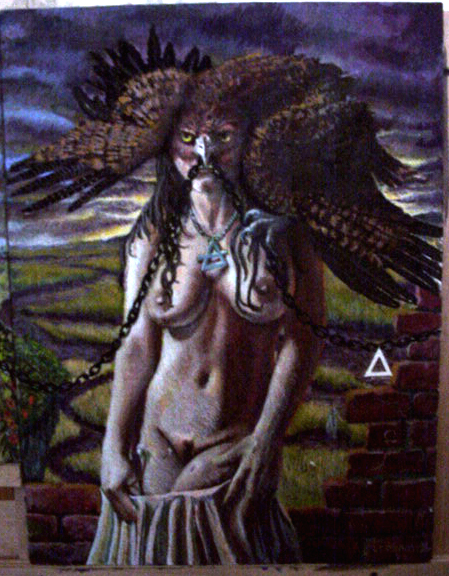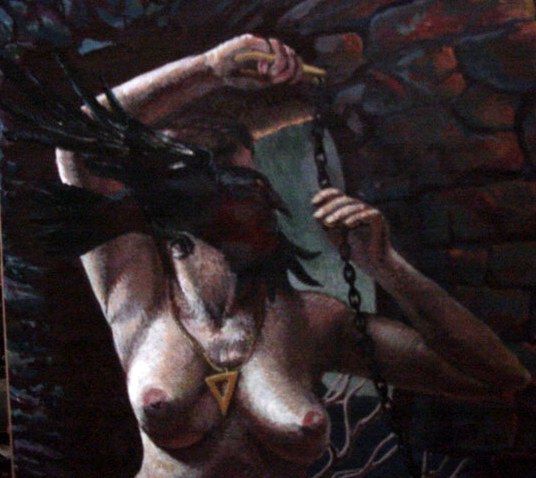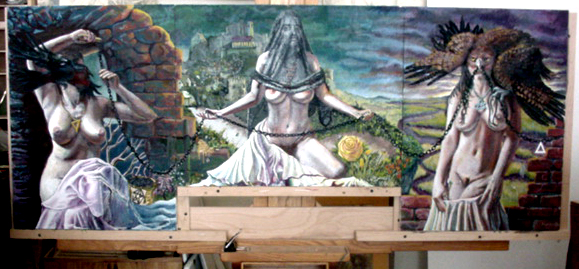


It started with a conversation I had with a printmaker friend of mine. He had found a small statue in a museum. Its specific purpose eluded the experts, but he believed it was one of the fates. He created an image as a print of the 3 fates and sent it to me. Our conversation began to elude to the aspects that the term FATE had eluded to. From the selections of genes that were assembled to make a specific individual, to the individual’s ability to avoid destruction, the success or failure of a gathering of people as a cohesive group, the role religion might play in their lives, the system of political oversight that was chosen, the choices available to every individual as they went through life. I decided to attempt my own version of the fates, using much of the things he and I had discussed. I also attempted to assign a numerical progression to the piece, which played a major role in the composition. the three fates Clotho, she who creates your fate, traditionally portrayed as a spinner of a thread, Lachesis, who measures your fate who traditionally performs this function with her hands and Atropos who ends your fate, traditionally she is shown with a set of shears that the thread travels across until it’s decided she should cut it.

There is ONE horizontal piece which is the life one leads (Lachesis center panel) there is the beginning and the end (2 end panels, the alpha, and omega Clotho and Atropos), there 3 of them making a whole. I chose a chain instead of a thread to show the individual days of life that link together. Each of them along with the product of their endeavor is assigned one of the 4 earth elements: earth, air, fire, and water. There is a pentagram on the container of the links she reaches into in order to make the links. Six is the number of society, portrayed by a honeycomb beside Lachesis along with six bees that are collecting pollen and nectar from the flowers of the plants behind her. Seven is God’s number, there are seven windows in the church behind her. Eight is the number of perfection thus the rose next to her is within an octagon. And finally, nine, the number of completion, and the number of seeds blown off the dandelion held by Atropos.
Each of them has their features obscured. Clotho’s face is fused with that of a crow flying in front of it. In most of the creation myths used by the first peoples of this country, a crow was responsible for the creation of the world and everything in it. Atropos is fused with that of an owl. Within these same peoples, owls are the bringers of death and destruction with the silence of a force of nature. We are allowed to make out Lachesis’ features ever so slightly as she’s wearing a translucent veil. This is the aspect of life that we are most familiar with. There are many more symbols and shapes that I’m sure if the piece survives the winds of time, a few doctorate theses will be written about it.
The piece took two years to research and design. The preparatory drawing took eight months and the painting(s) took almost two years. I have a few more things to do before I consider it complete.
